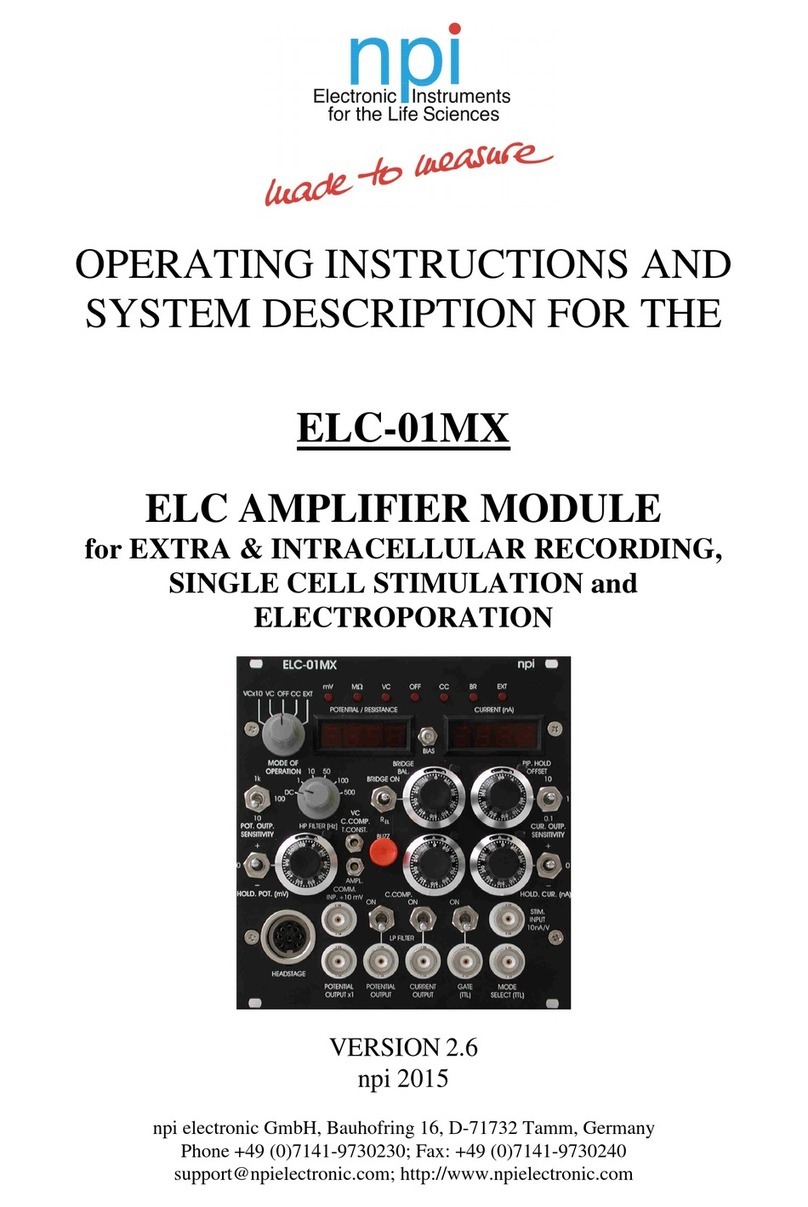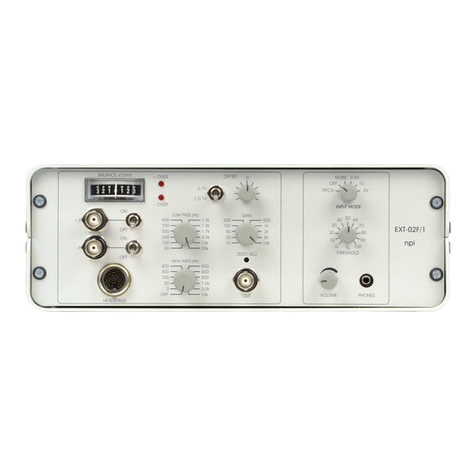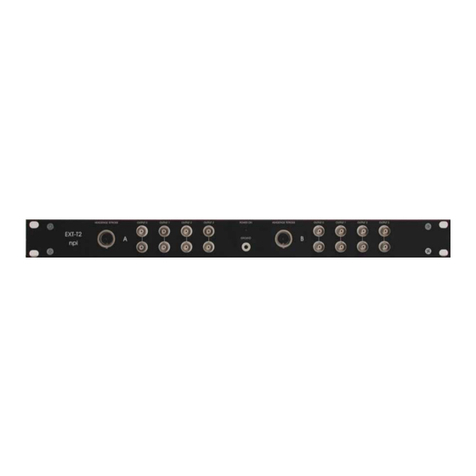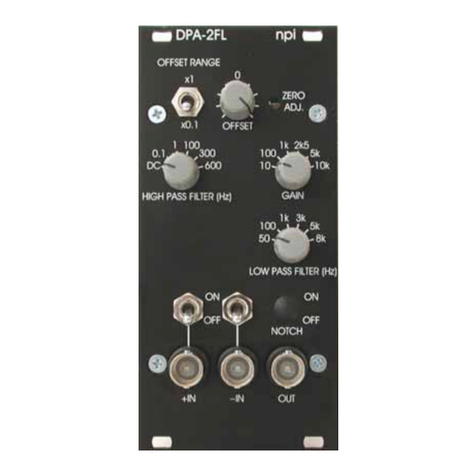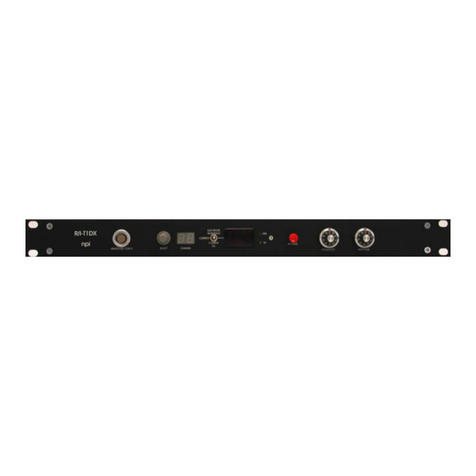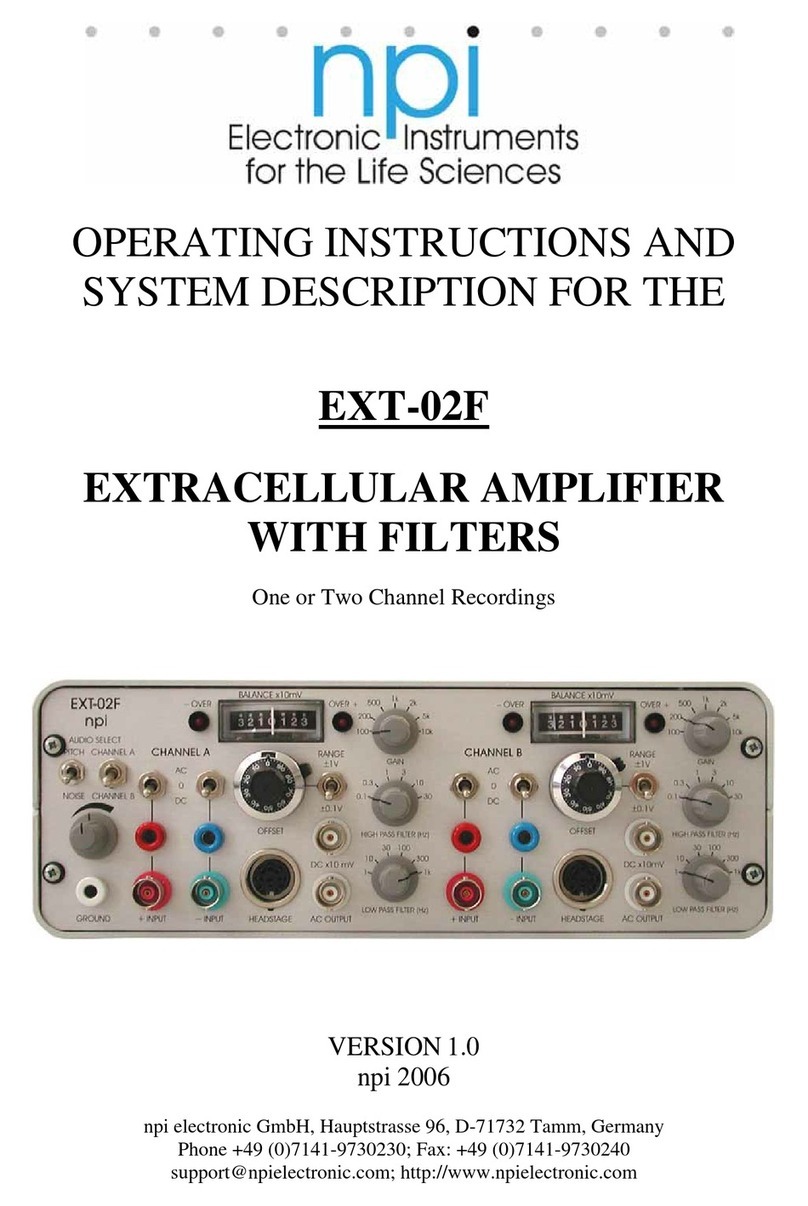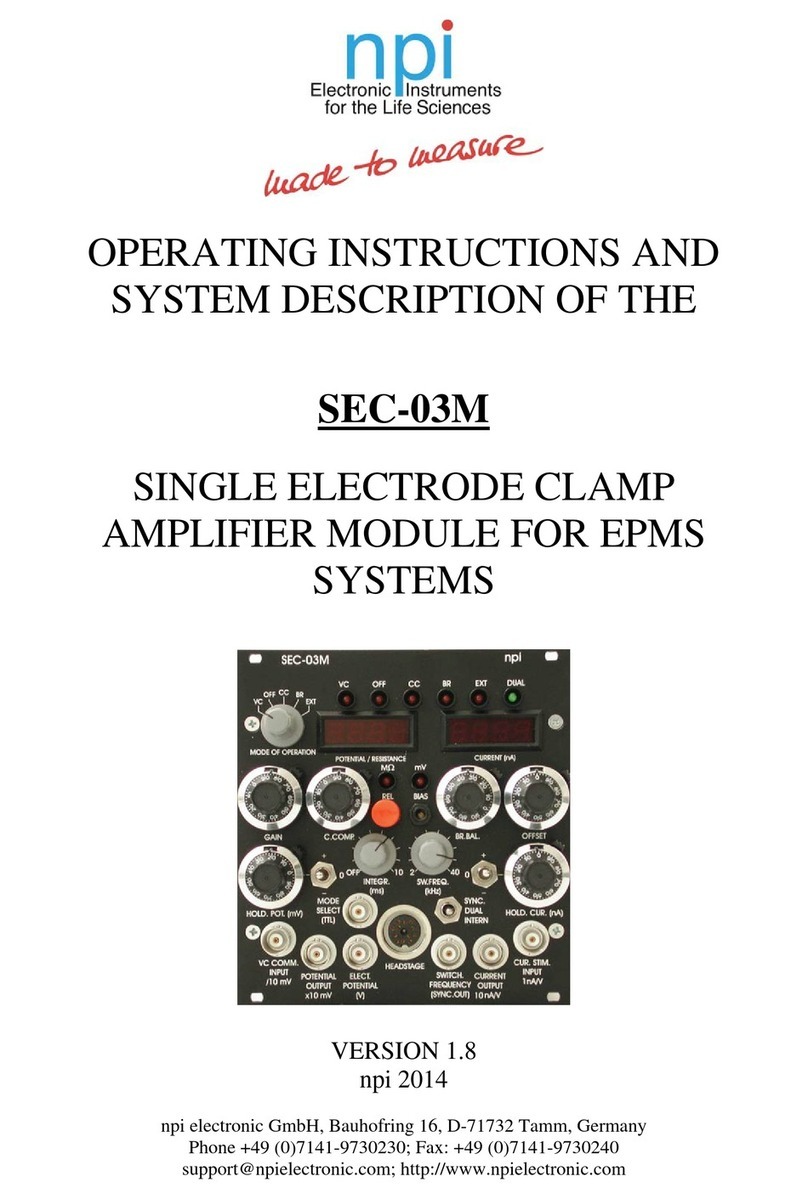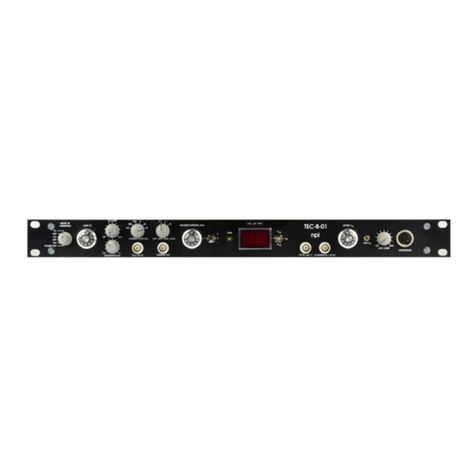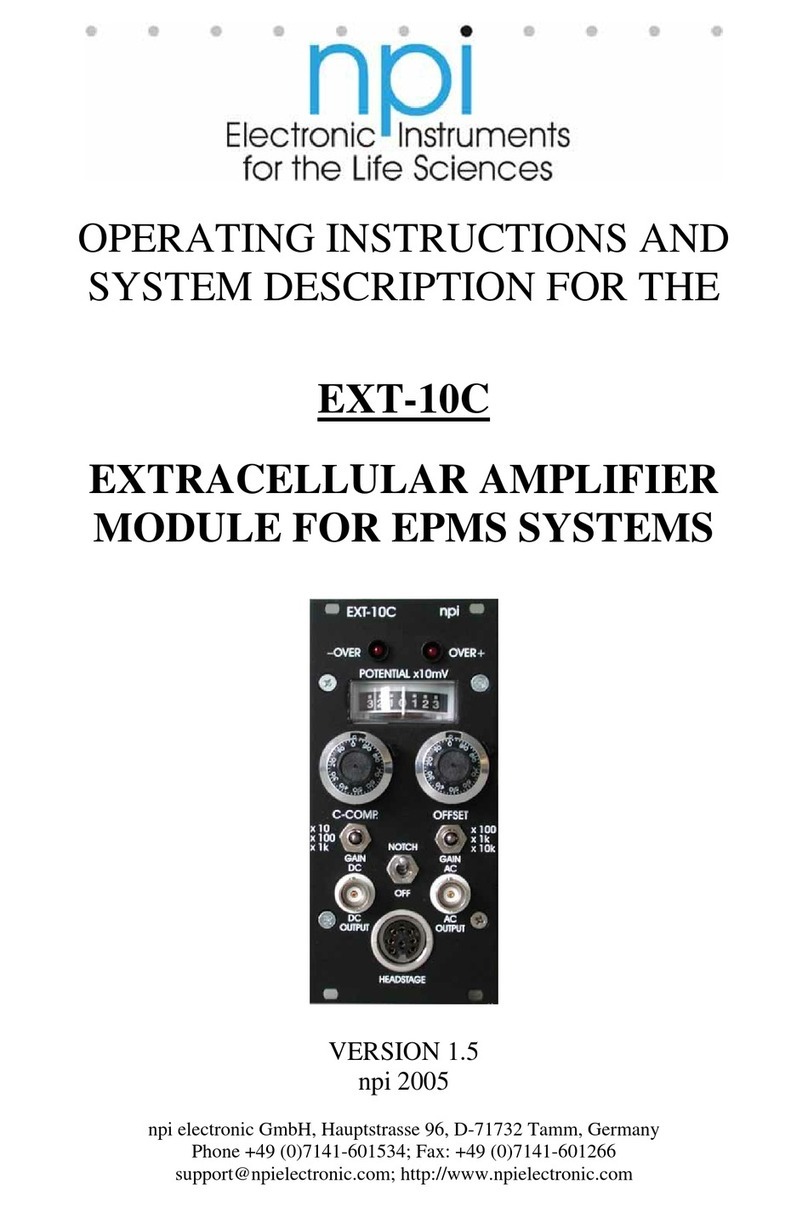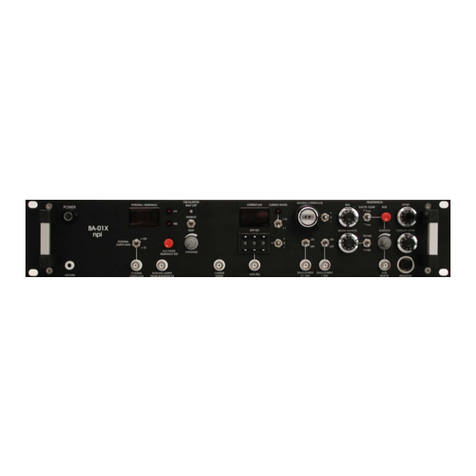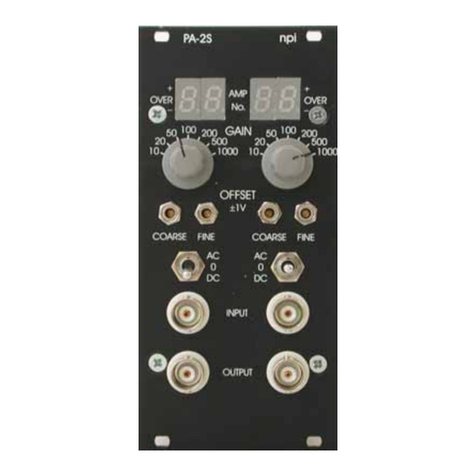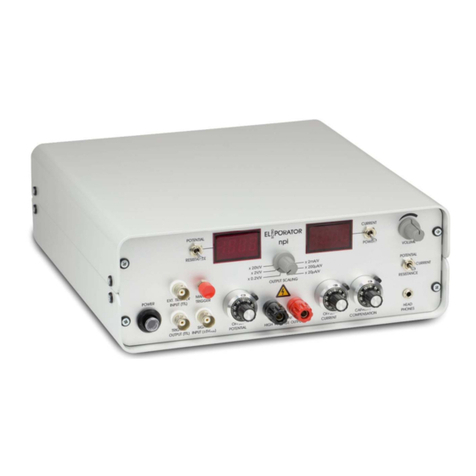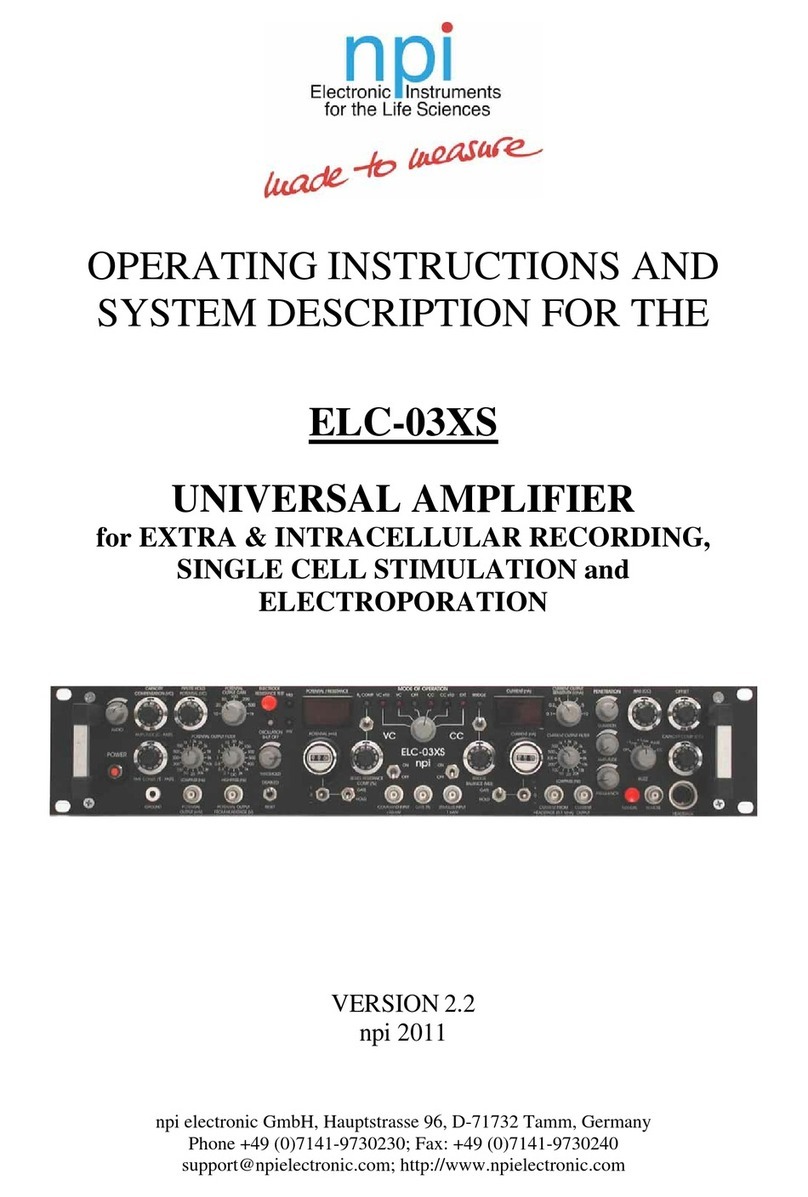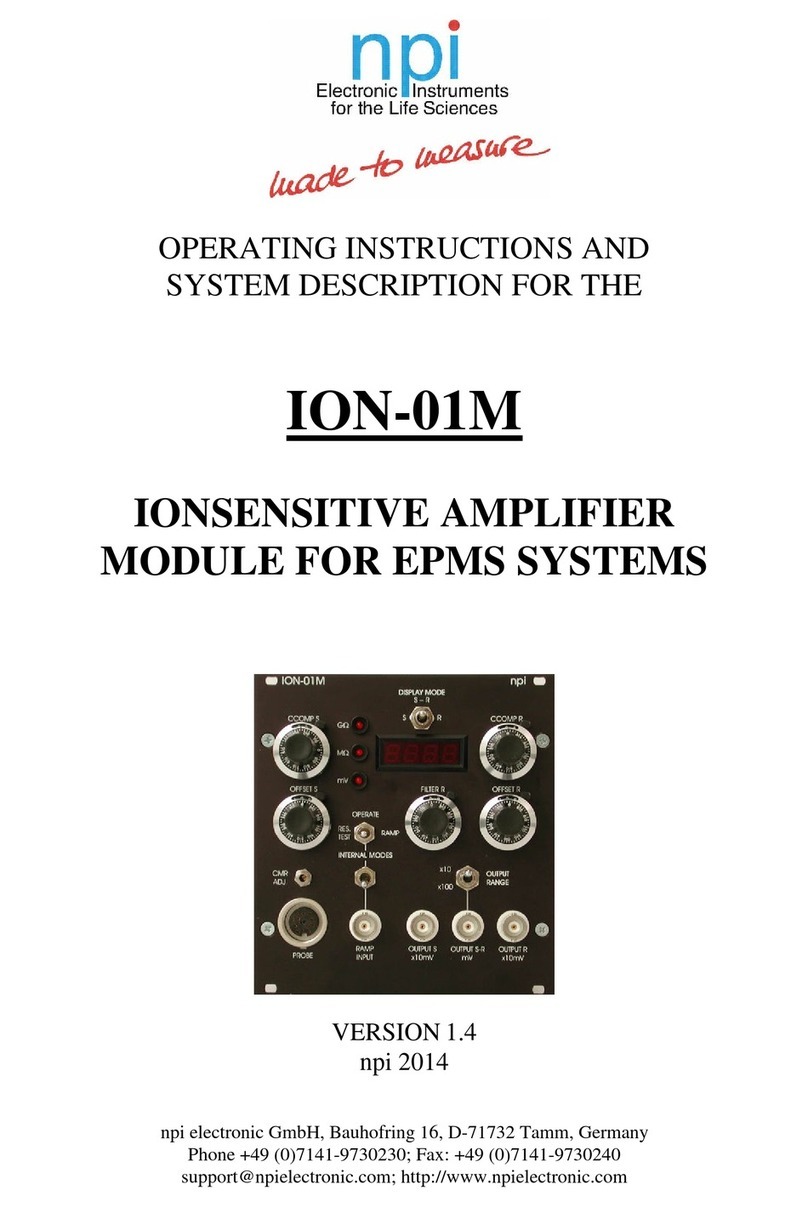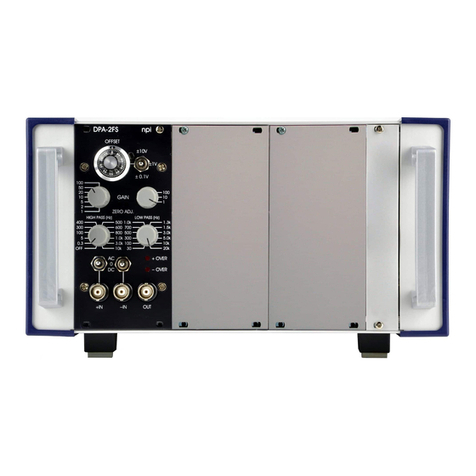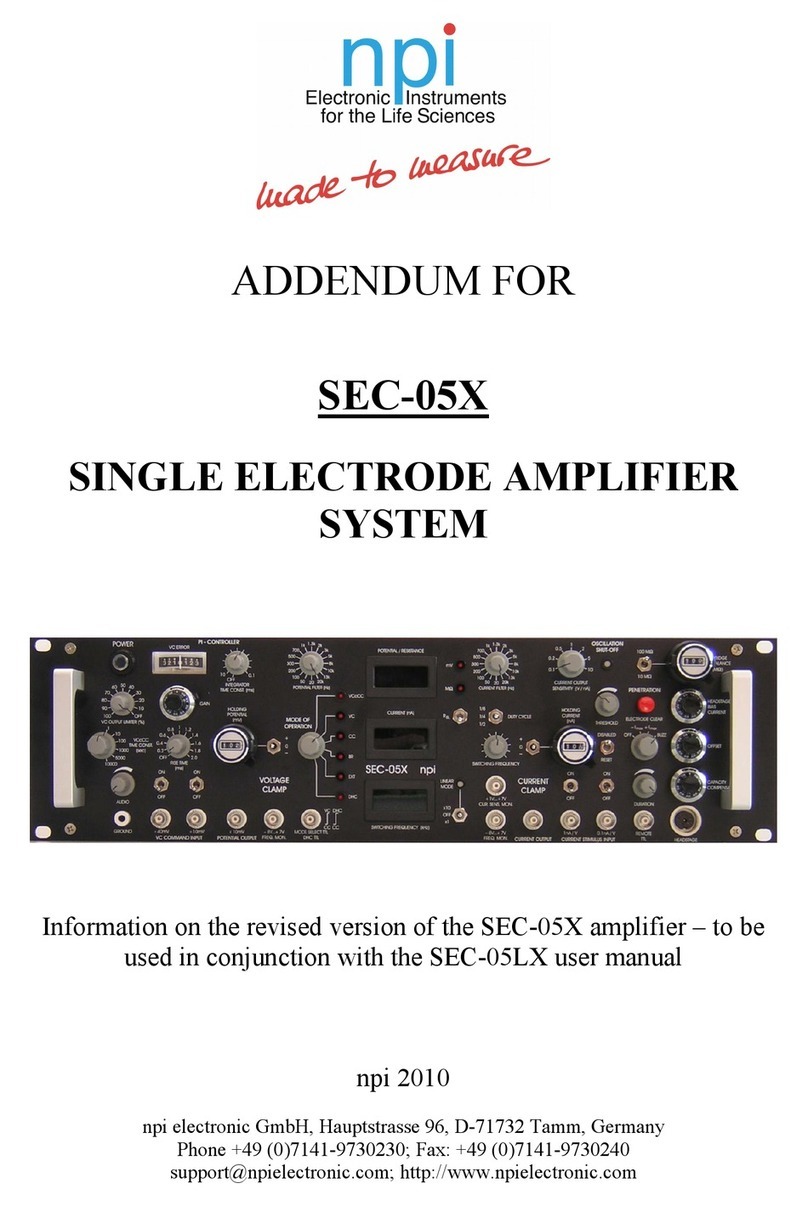
SEC-05X User Manual
version 2.0 page 2
Table of Contents
About this Manual................................................................................................................... 4
1. Safety Regulations.............................................................................................................. 5
2. Introduction......................................................................................................................... 6
2.1. Why a Single-Electrode Clamp? ................................................................................. 6
2.2. Principle of Operation ................................................................................................. 8
Major advantages of the npi SEC System................................................................... 10
3. SEC-05X System................................................................................................................ 10
3.1. SEC-05X Components ................................................................................................ 10
3.2. Description of the Front Panel..................................................................................... 12
3.3. Description of the Rear Panel...................................................................................... 20
4. Headstages .......................................................................................................................... 21
4.1. Standard Headstages.................................................................................................... 21
4.2. Low-noise Headstage (SEC-HSP)............................................................................... 23
5. Setting up the SEC-05X System......................................................................................... 24
6. Passive Cell Model ............................................................................................................. 24
6.1. Cell Model Description ............................................................................................... 25
6.2. Connections and Operation ......................................................................................... 26
7. Test and Tuning Procedures ............................................................................................... 28
7.1. Headstage Bias Current Adjustment ........................................................................... 28
7.2. Electrode Selection...................................................................................................... 29
7.3. Offset Compensation................................................................................................... 29
7.4. Bridge Balance (in BR mode) ..................................................................................... 30
7.5. Switching Frequency and Capacitance Compensation (in switched modes).............. 32
Criteria for the selection of the switching frequency .................................................. 32
7.6. Capacity Compensation - Tuning Procedure............................................................... 34
First part: basic setting................................................................................................. 34
Second part: fine tuning............................................................................................... 40
7.7. Testing Operation Modes ............................................................................................ 41
Current Clamp (in BR- or discontinuous CC mode)................................................... 41
Voltage Clamp............................................................................................................. 41
8. Special Modes of Operation ............................................................................................... 43
8.1. Dynamic Hybrid Clamp (DHC) Mode (optional) ....................................................... 43
General Description..................................................................................................... 43
Operation..................................................................................................................... 43
8.2. Linear Mode (optional)................................................................................................ 43
General Description..................................................................................................... 43
Operation..................................................................................................................... 43
8.3. VCcCC mode (optional).............................................................................................. 44
General Description..................................................................................................... 44
Operation..................................................................................................................... 44
Current Clamp Input.................................................................................................... 45
9. Sample Experiments........................................................................................................... 46
9.1. Sample Experiment using a Sharp Microelectrode ..................................................... 46
9.2. Sample Experiment using a Patch Electrode............................................................... 49
10. Tuning VC Performance.............................................................................................. 51
General Considerations................................................................................................ 51
Tuning Procedure ........................................................................................................ 52
11. Trouble Shooting......................................................................................................... 53
12. Appendix ..................................................................................................................... 54
12.1. Theory of Operation .................................................................................................... 54
